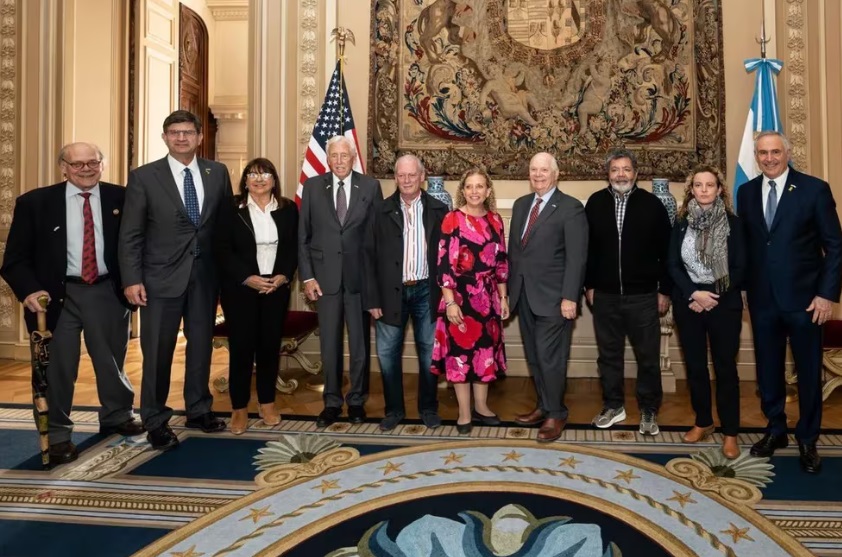
Gerardo Martínez has just broken a record: he visited the US embassy twice in less than two weeks. One was on July 4, to celebrate the country’s Independence Day. The other was this week, when he led a CGT delegation that met with Mark Stanley and a group of senators from that country.
At the door they don’t even have to ask for your ID.
He was accompanied by Andrés Rodríguez (UPCN) and Maia Volcovinsky (judicial), as well as the lawyer Marta Pujadas. They took the obligatory photo between both flags.
From the conversation, what Martínez told his journalist friends was revealed. In Infobae, he said that the UOCRA leader went to inform Stanley that in Argentina “a cycle of good relations with the Government was inaugurated.” And he went further: “We are betting that this will continue, that it will not be a circumstantial or discretionary issue but part of a policy established by the Government because from the CGT we consider that in the face of the serious problems that occur structurally in Argentina, there is no political administration that can solve these structural problems alone.” In other words, he went to say that they want to collaborate. Not leave the government alone in applying its policies for these “structural” changes.
Martinez also said, whether in English or Spanish, that “unions are an important institution in the strategic development of production, work and upward mobility. They maintain that the United States achieved what was once called ‘The American Dream’ through the prominence of unionism, which generated the development of investments.”
The CGT’s version of the “American dream,” which equates Peronism’s “upward social mobility,” is a bit twisted. If in the case of early Peronism the “50/50” had to do with postwar conditions, in the United States it was a story that began in the 1930s seeking to add the middle classes to the expansion project of North American imperialism that included wars, invasions, colonialism and finally support for coups d’état that allowed a leap in the power of the country and its corporations. That “prosperity,” which to a certain extent reached the middle and working class sectors, was an “American nightmare” for millions of human beings in semi-colonial countries, as well as for a sector of the North American people. The neoliberalism brought by Reagan began to “wake them up.”
The brief digression is to point out the dangerous story of the CGT delegation. Before leaving, it made it clear that “we told them that we need a dialogue of agreement, which gives us perspective on the development of what we want in Argentina to go out and sail in the sea of globalization and gain market share.” That a “worker” leader wants to get on Milei’s ship to “navigate globalization” and “gain markets” is already a lot. But it is not surprising. Martínez is a faithful employee of the construction chamber, he has the right to have his “American dream.”
The repeated visits of the “inner circle” of the CGT, in this case the “independents”, have another objective: in this new “cycle of good relations with the government”, Martínez is a candidate to join the “May Council”. This is the institution invented by the government to “put into practice” the 10 points it presented in Tucumán. One more anti-popular than the other.
Let us remember that when the Law on the Basis was known, the AMCHAM (North American Chamber of Commerce) complained that it fell short (?!) and asked to deepen “a process of reforms that must have the support of the main actors in the country (Congress, academics, unionists, businessmen, etc.)”.
Martinez’s visit is a message: you can count on us to support these reforms.
The question is: do Pablo Moyano and the rest of the CGT support this message?
Source: www.laizquierdadiario.com

